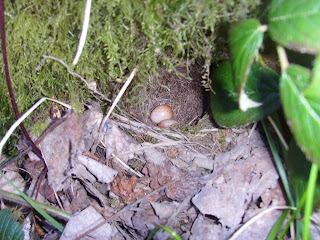Hi there. Had a trip up to
Carsington Water today and managed to bag myself 4 Year ticks- hurrah.
First up was a
Great Northern Diver that has been present thoughout the winter. What's really nice now though is that it's moulting into summer plumage and is beginning to look very smart.
Great Northern Diver
To see what one looks like in full summer plumage take a look at this
link. The next year tick of the day was quite a surprise when 6
Black-tailed Godwits were found feeding around Horseshoe Island. This bird is an uncommon passage migrant in Derbyshire, so I was very pleased to see them, especially as 2 were in full summer plumage already. I managed to get a distant record shot, but again,
this link will show just how pretty they are.
sleeping Black-tailed Godwit
The next year tick is a bit of a cheat because it is Barnacle Goose. It's a cheat because the birds at Carsington are part of a feral population that have been present for several years after escaping from a collection. "Real" Barnacle Geese migrate to Britain in the winter before leaving and breeding in the High arctic.
Barnacle Geese
Last but by no means least was the 4th year tick of the day - Swallow. The first birds were seen flying over Stones Island and then approximately 12 were seen feeding low over the reservoirs. Amazing to think that these birds have just arrived back from a winter spent in South Africa! Hopefully I'll be able to ring my first Swallows this year and I may even get a control from Africa. That would be good!
The year list moves on:
117 – Great Northern Diver
118 – Black-tailed Godwit
119 – Barnacle Goose
120 - Swallow
Other birds noted today were: Chiffchaff, Blackcap, Dunnock, Robin, Blackbird, Black-headed Gull (several pairs settling to breed), Common Gull (1 asleep with the BH Gulls), Oystercatcher (1 pair), Redshank, Coot, Moorhen, Mallard, Canada Goose, Pied Wagtail, Mute Swan, Tufted Duck, Teal (1 pair).



































